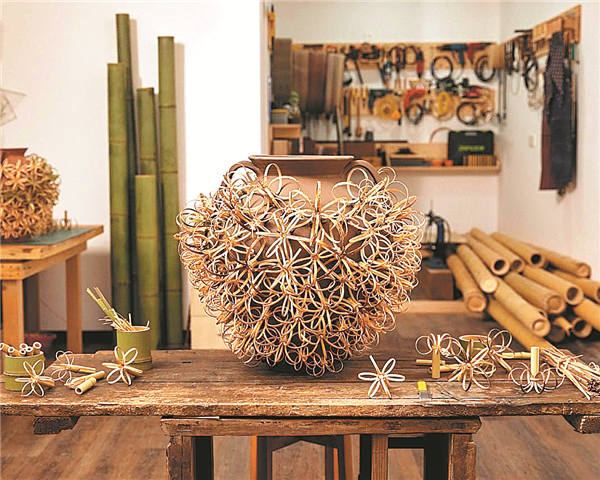

Artist transforms everyday objects to give tradition a modern relevance, Yang Feiyue reports.
Chinese designer Chen Min has been in the media spotlight for his works that are on display in Sotheby's auction house in New York. The display features a clay chestnut roaster with braided bamboo "flowers" protruding from the vents on its surface.
Chen was one of just three artists from around the world that were invited by Jonathan Anderson, the creative director of Spanish luxury brand Loewe, to apply local and traditional elements to a Spanish chestnut roaster.
Chen readily took up the offer since he has sought to forge a bond between the East and the West.
He transformed bamboo, a distinctive and easily recognizable Chinese element, into flowers to go with the baked pottery texture of the roaster.
"This inspiration comes from the feeling of bamboo growth," says the 41-year-old.
"The energy of the fibers that make the shoots become bamboo overnight reminds me of an eruption, so I tried to imitate this dynamic feeling in several styles."
Chen was born in 1980 and grew up in an artistic family in Hangzhou, capital of East China's Zhejiang province. His grandfather was an engraving painter, whose trade involved wood, copper, stone and other elements. He showed Chen a combination of Western technique and Chinese painting.
"One of the most important things that my grandfather taught me is observation," Chen says.
From combining Western technology and Chinese painting, his grandfather made Chen realize that printmaking is among the art forms that are closest to the concept of design.
Chen also has two uncles, one an architect and the other an industrial designer. "They showed me that industrial design could cover every aspect of life," Chen says.
Under their influence, Chen also started his journey into art. He underwent calligraphy training at a young age and developed a strong interest in traditional arts and crafts.